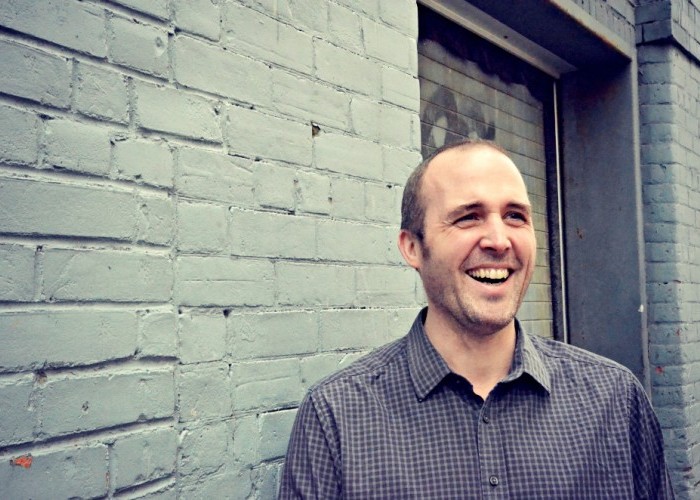Oct 28, 2025 10:47 AM
In Memoriam: Jack DeJohnette, 1942–2025
Jack DeJohnette, a bold and resourceful drummer and NEA Jazz Master who forged a unique vocabulary on the kit over his…

Nick Fraser says he’d feel incomplete if he only played improvised music.
(Photo: Courtesy of the Artist)Nick Fraser probably has performed with as many high-profile musicians as any living drummer in jazz—a remarkable track record, especially considering that he never has been based outside of Canada. A Toronto resident since 1995, when he moved from his hometown of Ottawa, Fraser spent years anchoring the rhythm section at the jam sessions for the Ottawa International Jazz Festival. The recurring gig put him on the same stage as Joe Lovano, Roy Hargrove and Wynton Marsalis, as well as hundreds of lesser lights winding down at the end of a night.
That kind of grueling routine would be one thing if Fraser was a drummer whose stock-in-trade was bop-based music, but he usually works in much less structured forms. His own quartet—featuring veteran saxophonist Tony Malaby, as well as Toronto musicians Rob Clutton (bass) and Andrew Downing (cello)—is a thorny improvisational unit. The band’s recent album, Is Life Long?, is Fraser’s second on the adventurous Portuguese label Clean Feed. His trio, which released Two Many Continents on Clean Feed in 2015, is rounded out by Malaby and pianist Kris Davis.
Fraser is the co-leader of another wide-ranging trio, Ugly Beauties, with pianist Marilyn Lerner and cellist Matt Brubeck. What’s more, the drummer’s other long-term musical ventures are as a member of Canadian trumpeter Lina Allemano’s two free-wheeling bands—the Lina Allemano Four and Titanium Riot—and Peripheral Vision, a quartet co-led by guitarist Don Scott and bassist Michael Herring.
“What makes Nick so special is that he backs up his seemingly fearless willingness to push any musical situation into new territory with a rooting in a huge breadth of the jazz and improvised music traditions,” Herring said. “He is equally able to draw on bebop, hard-bop and ’60s jazz language as he is free-jazz and improvised music. And he can, and will, turn on a dime between them—often when you’re least expecting it.”
It’s not surprising, then, to learn that Fraser’s role models include polymath drummers Joey Baron and Jack DeJohnette, as well as free-jazz titans Gerry Hemingway and Tony Oxley.
“Growing up, I always just wanted to play,” Fraser said. “I wanted to know the standards, so I could do a wide range of things. Part of that is just wanting to be able to keep working, but I just wouldn’t feel complete if I only played improvised music.”
Part of his desire to work as much as possible also contributed to his decision to focus on his work in Toronto, rather than trying to break into the New York scene. As a young man, he had two children—now aged 22 and 17—so he dug in and began to build a network of like-minded collaborators. Fortunately, Toronto’s jazz scene was undergoing a sea change, from a preponderance of hard-bop and modal jazz to the rise of young players like Allemano, Herring, Clutton and saxophonist Brodie West.
Fraser caught the wave, forming the co-operative called Drumheller with Clutton, West and others, and launching his long association with Allemano and Herring.
“The people I work with have allowed me to develop my own slant on playing,” Fraser said. “Whether I’m playing free or more organized music, I try to listen and react in the moment the same way. Both in my playing and my composing, I like to leave a lot of things to chance. I like to be pleasantly surprised by the results.”
“Nick has an enormous sound palette and a huge creative sonic imagination,” Allemano wrote in an email from Germany, where she spends half her time. “Nick isn’t just playing ‘drums,’ he’s playing music.” DB

Jack DeJohnette boasted a musical resume that was as long as it was fearsome.
Oct 28, 2025 10:47 AM
Jack DeJohnette, a bold and resourceful drummer and NEA Jazz Master who forged a unique vocabulary on the kit over his…

D’Angelo achieved commercial and critical success experimenting with a fusion of jazz, funk, soul, R&B and hip-hop.
Oct 14, 2025 1:47 PM
D’Angelo, a Grammy-winning R&B and neo-soul singer, guitarist and pianist who exerted a profound influence on 21st…

To see the complete list of nominations for the 2026 Grammy Awards, go to grammy.com.
Nov 11, 2025 12:35 PM
The nominations for the 2026 Grammy Awards are in, with plenty to smile about for the worlds of jazz, blues and beyond.…

Drummond was cherished by generations of mainstream jazz listeners and bandleaders for his authoritative tonal presence, a defining quality of his style most apparent when he played his instrument unamplified.
Nov 4, 2025 11:39 AM
Ray Drummond, a first-call bassist who appeared on hundreds of albums as a sideman for some of the top names in jazz…

Jim McNeely’s singular body of work had a profound and lasting influence on many of today’s top jazz composers in the U.S. and in Europe.
Oct 7, 2025 3:40 PM
Pianist Jim McNeely, one of the most distinguished large ensemble jazz composers of his generation, died Sept. 26 at…






